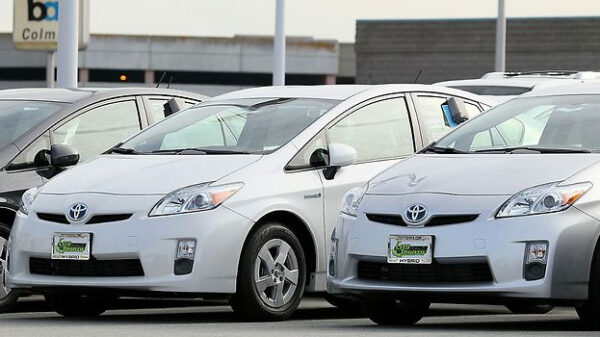
KRA has recently embarked on matching the VAT claimed by the various taxpayers with the respective VAT declared by their suppliers/FILE
The Cabinet Secretary for National Treasury is expected to table a national budget of about 2.3 trillion on 30 March 2017 as compared to 2.2 trillion shillings budget table in the 2016-2017 fiscal year budget.
As is expected in an election year, the government may shy aware from imposing additional direct taxes to finance the budget.
This leaves the option of rationalization of public expenditures, debt financing and enhancing tax compliance. Let us now focus on the budget financing options.
To start with, the government has promised to continue with rationalization of public expenditures to enhance efficiency and productivity in service delivery by scrutinizing expenditures carefully to ensure quality alignment to the government economic transformation agenda and strategic interventions for national interest.
As a result, the economy is projected to expand by 5.9 percent in 2017 from the estimated 6.0 percent in 2016. The government has promised that this growth momentum will be maintained over the medium term supported by output in agriculture, ongoing recovery of tourism and completion of key public projects in roads, rail and energy generation.
In addition, the strong consumer demand and private sector investment as well as a stable macroeconomic environment in the country will help reinforce this growth.
If this initiative can be effectively implemented, we could see a significant reduction of wastage of public resources, sustainable economic growth with assured increase in tax revenues and lower debt financing.
Secondly, debt financing has been high thus eliciting concern as to whether this is sustainable.
The government has projectedthe fiscal deficit at Ksh 523.7 billion (6.3 percent of GDP) in the FY 2017/18 against the estimated fiscal deficit of Ksh 665.4 billion (8.9 percent of GDP) in the FY 2016/17.
Excluding expenditures related to the Standard Gauge Railway (SGR) which is a one off expenditure, the deficit for the FY 2017/18 amounts to about Ksh 469.6 billion or 5.7 percent of GDP.With expected completion of flagship projects such as SGR this year, we expect the deficit to narrow down with larger proportion of the expenditure being financed by taxes.
Thirdly, the government targets revenue collection including Appropriation-in-Aid (AIA) of Ksh 1.7 trillion (20.6 percent of GDP) for the FY 2017/18 from Ksh 1.5 trillion (20.4 percent of GDP) in the FY 2016/17.
Ordinary revenues mainly taxes are projected at Ksh 1.5 trillion (18.7 percent of GDP) in the FY 2017/18 up from the projected Ksh 1.37 trillion (18.4 percent of GDP) in the FY 2016/17.
The government has indicated that this performance will be underpinned by on-going reforms in tax policy and revenue administration, through automation and inter agency collaboration and connectivity.
The Government will also be expected to complete the review of the Income Tax law so as to modernize it and align it to international best practice.
Considering rationalization of public expenditures to enhance efficiency and productivity in service delivery may be onerous more so if there is no collaboration between the National Government, County governments and related government agencies.
In this regard, the only option available in the short term is for the government to enhance tax compliance and probably explore the option of imposing additional indirect taxes such as excise duty and VAT.
Investment in automation of tax systems andprocesseshas definitelyenhancedrevenue collection. The Kenya Revenue Authority (KRA)has recently embarked on desk top audits, thanks to the capability of the iTax system to mine and analyse data provided by various taxpayers with the aim of identifying non-compliant taxpayers.
For example, since VAT is a consumption tax that allows registered taxpayers to offset deductible VAT charged on expenses against VAT charged on supply of taxable goods and services throughout the supply chain, KRA has recently embarked on matching the VAT claimed by the various taxpayers with the respective VAT declared by their suppliers.
Though a similar approach is being employed in other taxes to determining the extent of revenue leakages, we expect it to be employed with more intensity with adoption of a withhold tax system and KRA’s plan to engage the services of consultants to support its taxpayer base expansion and revenue enhancement initiatives.
This move will reduce field tax audits and at the same time unearth non-compliant taxpayers in a cost effective manner. The revenue authority also needs to review the new ways of doing business to ensure they aresatisfactorily legislated in our tax laws to achieve the desired result in terms of revenue base expansion.
To complement an ambitious budget, KRA has also made effort to leverage on digitization of other government systemssuch as transfer of propertyin cognizance of the need to scrutinise transactions which may lead KRA to incidences of tax evasion.
The legality of this framework has to some extent being challenged hence the need for harmonisation of the various statutes before adopting such an approach.
All said and done, if rationalization and accountability of public expenditures is actualised and tax compliance and revenue collection enhanced, Kenya has the potential of a sustained economic growth with minimal or no debt financing.
This will further have a ripple effect on the national income and level of employment thereby enhancing living standards of Kenyans.
By Alex Ngingo
The writer is a Tax Manager atEY; the views expressed herein are personal and are not necessarily those of EY.



































